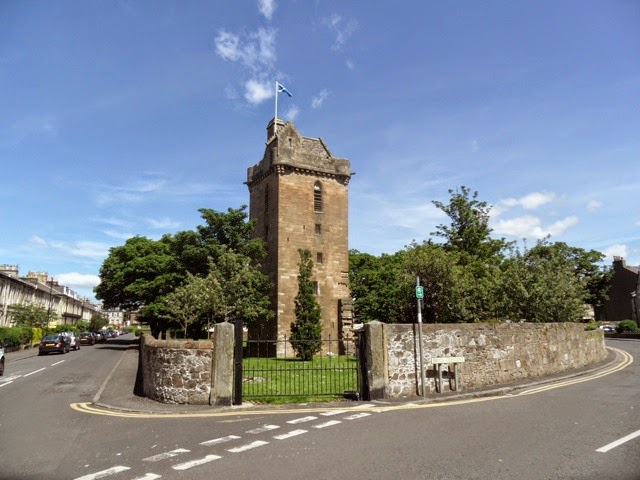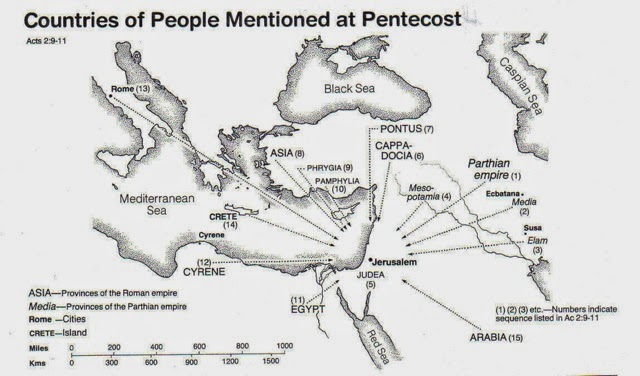Four summers ago when travelling through Devon and Somerset on a family holiday, we stopped off at Glastonbury. With all the coverage that this year's music festival has had over the weekend, it reminded me of a very different Glastonbury story which you can uncover if you ever visit, but which tends to be overwhelmed by all sorts of very strange 'new age' and quasi-occultic shops and imagery throughout the town.
At Glastonbury Abbey a story is told of an historic local tradition that Joseph of Arimathea visited the area and perhaps brought a teenage Jesus with him. The Abbey interpretative panels, and books and booklets on sale in the gift shop, tell this story time and again. This tradition is not limited to Glastonbury but extends into Cornwall, especially to areas with tin mining history.
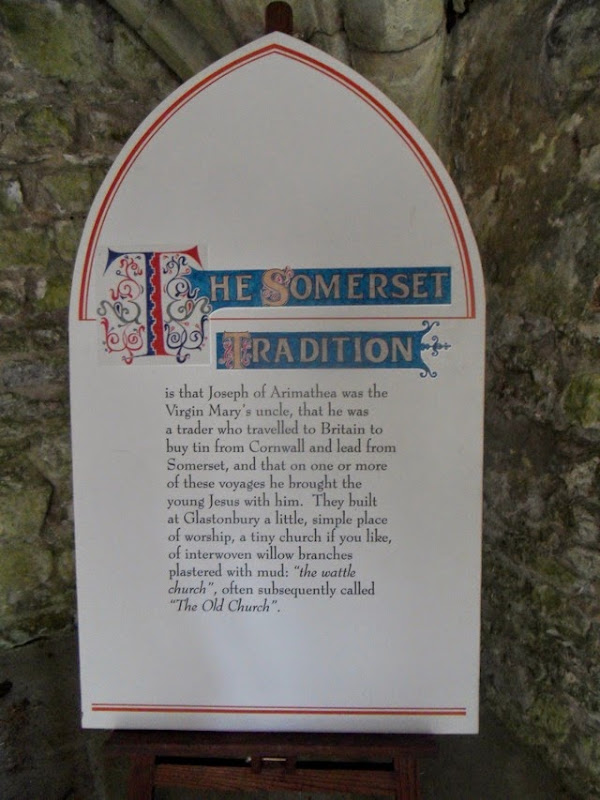
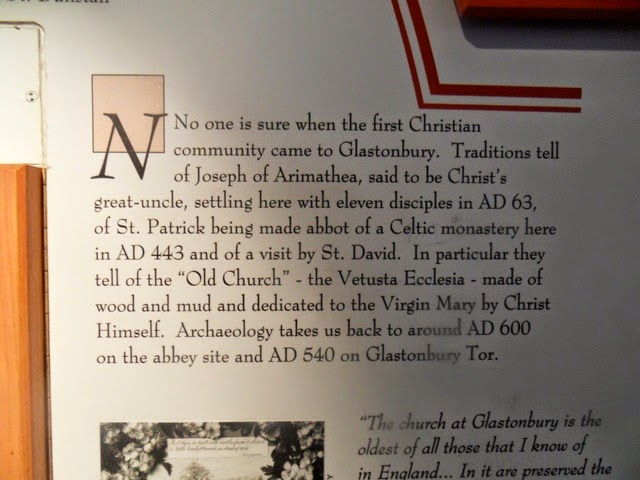
Joseph is said to have planted a tree on nearby Wyrral or Wearyall Hill, which is clearly visible from the Abbey, and from which many other trees have been grafted and which are dotted in various places throughout the town. Most of these have a small plaque beside them. Below are some pics of the one within the Abbey grounds, just outside St Patrick's Chapel. These are said to bloom twice a year, at Christmas and Easter. Our tour guide told us that the Queen has a small branch from the Glastonbury Thorn as a centrepiece each year on the Royal Family's Christmas dinner table. 
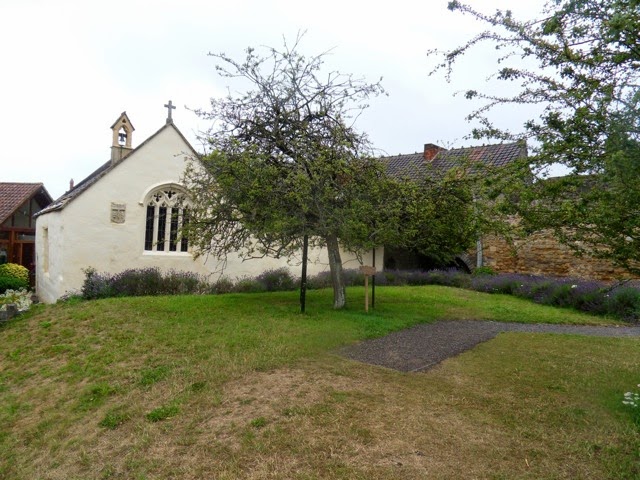
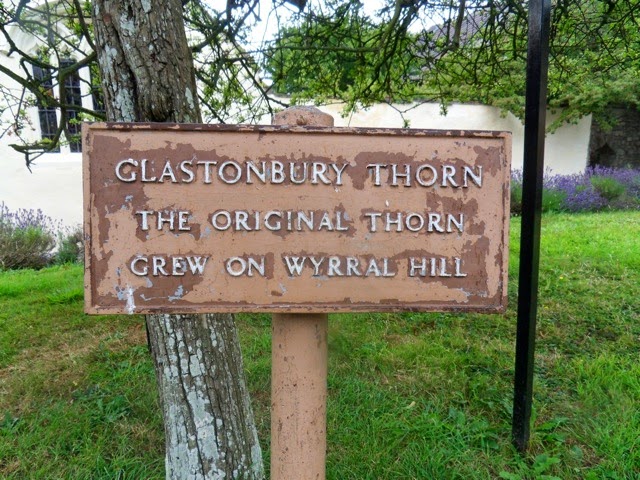
The Church of St John the Baptist is a fine building in the centre of the town, and it has a thorn tree at its entrance.

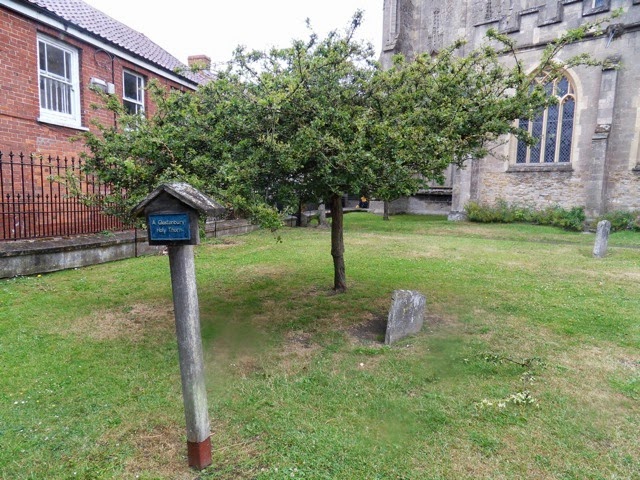
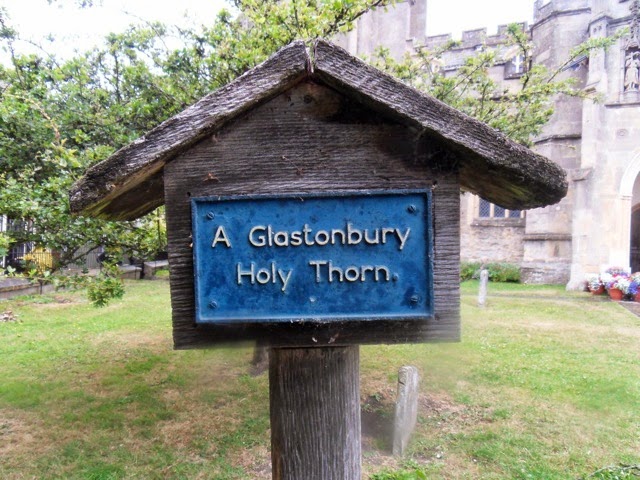
Inside the church there are some stained glass windows which tell the Joseph of Arimathea story - that he brought two 'cruets' with him, and that the original thorn tree grew when he planted his staff on the hillside.
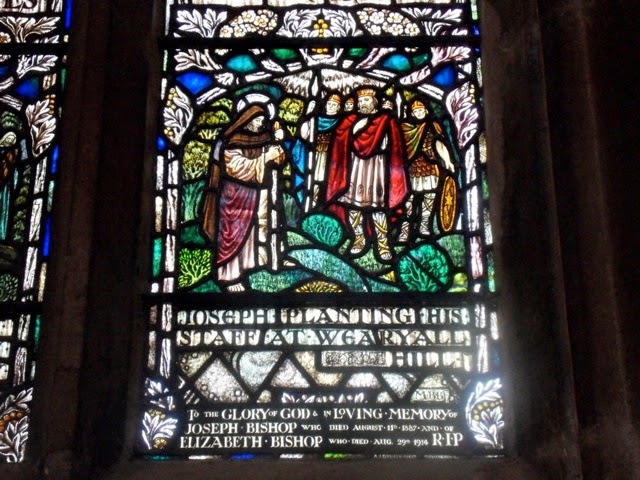
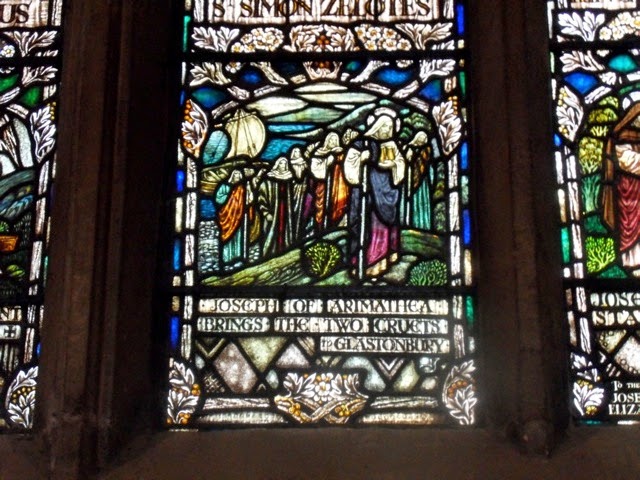
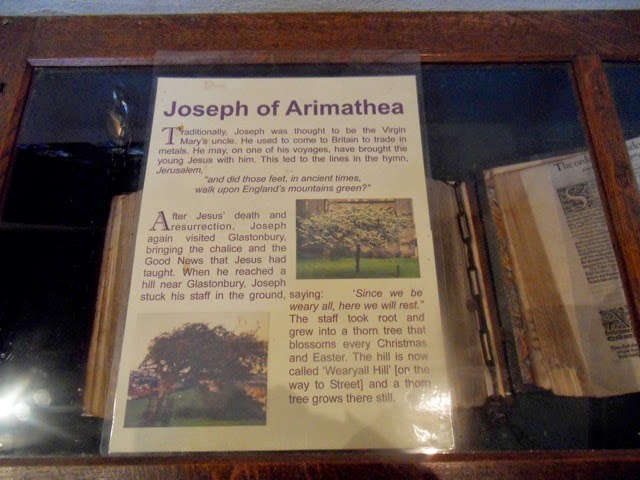
Also in the north transept of the church is a medieval stone coffin, once-reputed to contain relics or even the remains of Joseph of Arimathea. The church's website says '... In the centre of the transept is what may have been part of a shrine to Joseph of Arimathea, erected in the abbey in the early 15th Century. Displayed in a case on this tomb or shrine is a funeral pall made in 1774 from a cope. This cope was traditionally worn by Abbott Whiting, put to death on the Tor in 1539, although it was probably made during the Abbacy of his predecessor. The 1936 stained glass in the north window is by A J Davies and depicts some of the Glastonbury legends...'
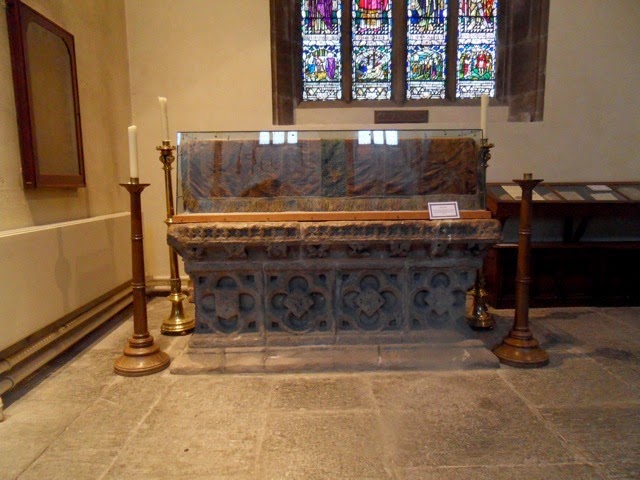
A tree still stood on Wearyall Hill when we visited, but a few months later it was cut down by vandals with a chainsaw. 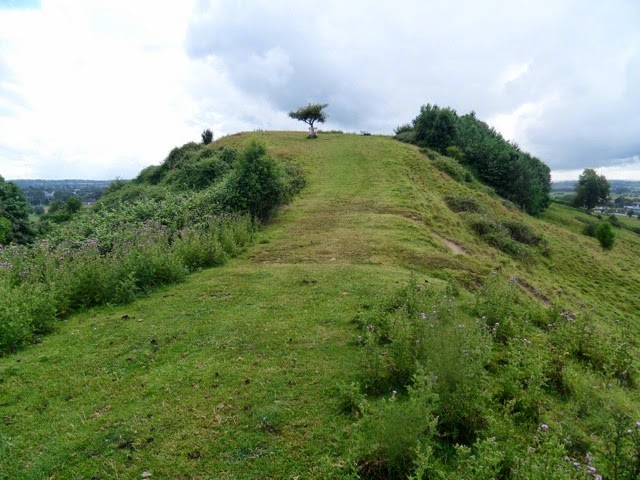
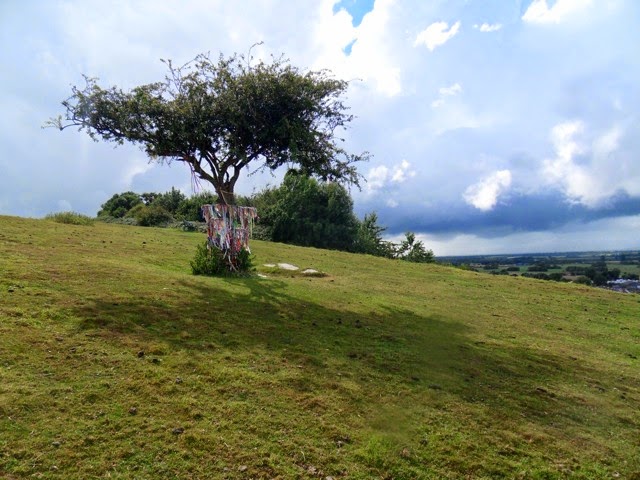
Glastonbury is a weird and wonderful place. That Glastonbury Abbey and the Church of St John the Baptist sustain and give some credence to the traditions is interesting. However, most of these seem to have been 'packaged' in the early 1900s following the purchase of the Abbey site by the Church of England, and later by a group of writers and mystics who organised in the town.
These traditions are based on Anglo-Norman stories which are first recorded in the 1200s.
The reputed discovery of the tomb of King Arthur and Queen Guinevere was at Glastonbury in 1191 - very convenient if you are a poor monk and you want to boost visitor figures in an age of medieval pilgrimages - sounds a lot like Sir John De Courcy's reputed discovery of the tomb of St Patrick, St Brigid and St Columcille at Downpatrick just five years earlier in 1186.
Both of these discoveries were during the reign of the French-born King Henry II. The chronicler Gerald of Wales wrote of both events. Maybe someone out there can shed more light on the possible connections. Perhaps they are nothing more than the result of an ambitious Anglo-Norman King ingratiating himself with the conquered locals in both countries.

